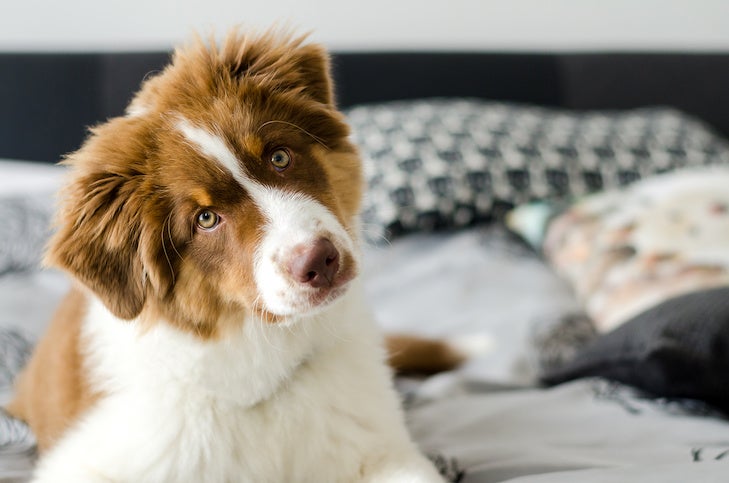
Teaching your dog to “read” is an advanced trick that will surprise and impress your friends and family. It’s also a very low-impact trick, so it’s appropriate for dogs who are young and still growing, senior dogs, or those who might have an orthopedic injury or health condition.
Although dogs aren’t going to learn the alphabet, it is theoretically possible to teach them to recognize images or the shape of words on the page. But for this trick, even though we will be holding up signs/flashcards with cues written on them, our dogs are actually going to be responding to physical cues like your hand position. Dogs are experts at watching us and picking up subtle cues in our body language, which means most of them will learn this trick quickly. Since humans are much less observant, the people watching likely won’t notice the discreet cues between you and your dog and instead will be convinced your dog is reading instructions written on the page.
Choosing Skills
The first step for teaching this trick is to determine which skills you’re going to teach your dog to “read” from the cards. Don’t worry about picking the most impressive tricks—the exciting part comes from the “reading” aspect. It’s best to pick tricks that your dog is already really confident with and already knows just on verbal cues.
Subtle Signals
The key to success with this trick is to get your dog used to responding to subtle cues. These could be the way that you hold the signs or how your fingers are placed on the sign (like having your fingers crossed or your thumb being out). You can also use cues based on the direction the sign is held, tipping it toward or away from your dog.
Make Flashcards/Signs
Make the signs that your dog is going to “read” by printing out signs on your computer, writing on paper or card-stock with markers, or using a dry erase board. Whatever format you choose, make sure that the writing is big enough so your friends/family can see them when you are showing your dog.
Here’s a video of my Newfoundland Sirius “reading.” Can you figure out what subtle cues she was responding to?
If you guessed the position of the paper, you’re right. For “sit,” I slightly tipped the paper; for “wave,” I held the paper to the right; for “touch,” I held it to my left; and for “bounce,” I held the paper up.
Teaching Your Dog to “Read” Sign #1
Once you’ve picked the sign and corresponding cue you’ll be using, and you have treats ready, here’s how to begin teaching the trick:
- Start by holding the sign and give your dog the verbal cue they already know as you pair it with the subtle physical cue you’ve picked for that sign. Praise and treat your dog when they do the trick.
- Repeat the verbal cue while holding the sign and give the physical cue, praising and treating your dog when they are successful.
- After several repetitions of pairing the subtle physical cue/sign with the verbal cue, hold up the sign giving your physical cue without the verbal cue. If your dog does the trick, give them lots of praise and treats.
- If your dog doesn’t do the trick, just go back a step where you are pairing the verbal cue with the trick again for a few more practice sessions before attempting without the verbal cue again.
When your dog is consistently doing the trick with the sign and just your subtle physical cue, it’s time to move onto adding your next sign/cue.
Teaching Your Dog to “Read” Sign # 2
Pick another one of your flashcards/signs for a trick your dog is confident with.
- Hold the sign out to your dog while giving the subtle physical cue paired with the verbal cue your dog already knows.
- Your dog may miss the verbal cue and anticipate that you want the same trick as you did with the first sign. If they offer the wrong trick, just get their attention back using treats. Then give the verbal cue your dog knows paired with the sign and the subtle physical cue. When your dog is successful, treat and praise.
- Repeat using the same process as you did with sign #1, pairing the verbal cue and your subtle physical cue/sign for several repetitions.
- Repeat until your dog is successfully offering this trick, then phase out the verbal cue so your dog is only responding to the physical cue.
While you’re working on teaching your dog to “read” sign number 2, be sure to continue to also practice sign number 1. This will help your pup make the connection that they need to watch what’s happening with your subtle cues and that the presence of the sign doesn’t just mean one thing.
Building Your Dog’s “Reading” Skills
Using the same steps as above, you can teach your dog to “read” as many signs as you want. Knowing at least three tricks makes the reading trick look the most believable and impressive. With a little practice, your dog will be “reading” in no time!

